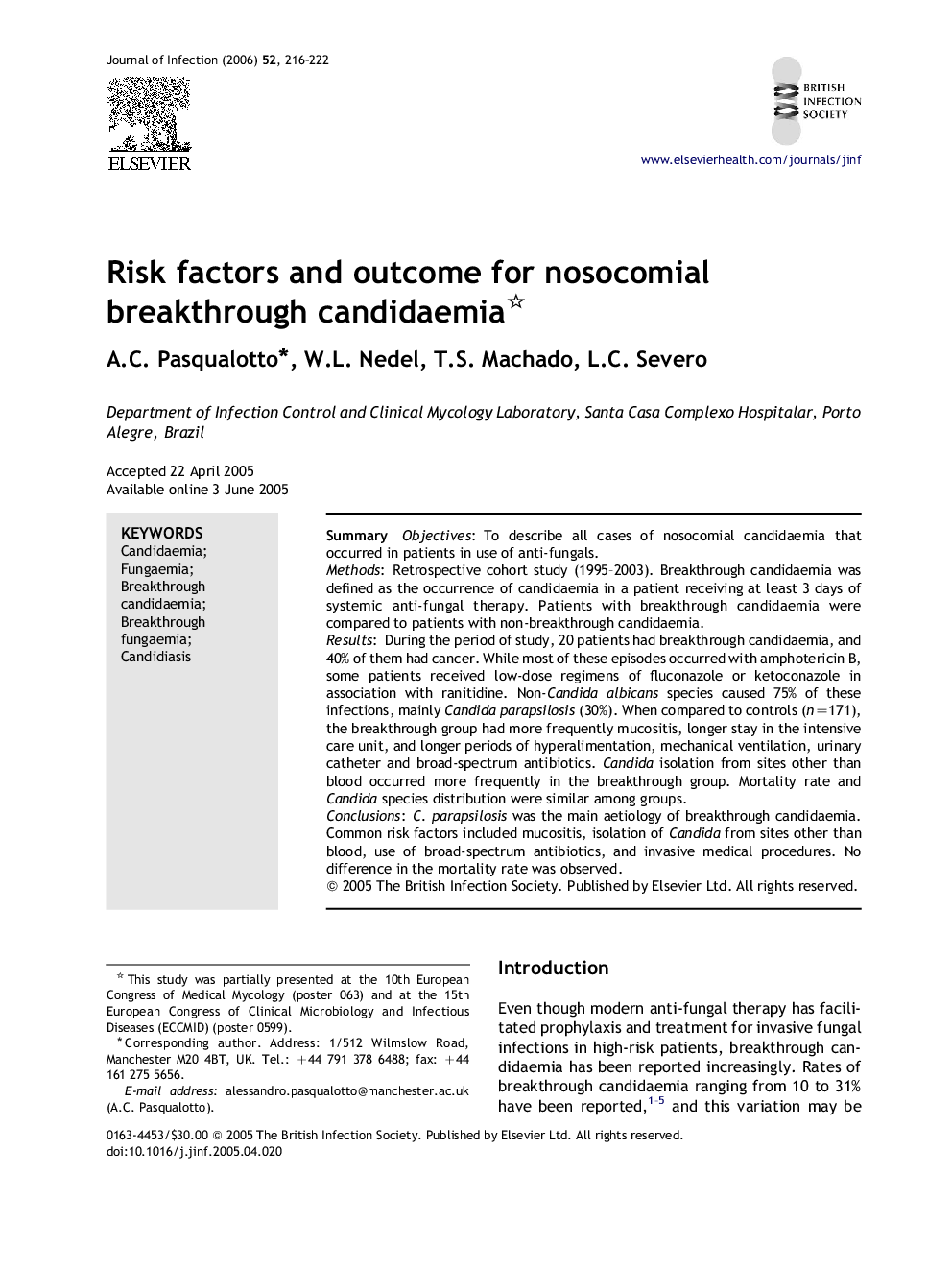| Article ID | Journal | Published Year | Pages | File Type |
|---|---|---|---|---|
| 3376433 | Journal of Infection | 2006 | 7 Pages |
SummaryObjectivesTo describe all cases of nosocomial candidaemia that occurred in patients in use of anti-fungals.MethodsRetrospective cohort study (1995–2003). Breakthrough candidaemia was defined as the occurrence of candidaemia in a patient receiving at least 3 days of systemic anti-fungal therapy. Patients with breakthrough candidaemia were compared to patients with non-breakthrough candidaemia.ResultsDuring the period of study, 20 patients had breakthrough candidaemia, and 40% of them had cancer. While most of these episodes occurred with amphotericin B, some patients received low-dose regimens of fluconazole or ketoconazole in association with ranitidine. Non-Candida albicans species caused 75% of these infections, mainly Candida parapsilosis (30%). When compared to controls (n=171), the breakthrough group had more frequently mucositis, longer stay in the intensive care unit, and longer periods of hyperalimentation, mechanical ventilation, urinary catheter and broad-spectrum antibiotics. Candida isolation from sites other than blood occurred more frequently in the breakthrough group. Mortality rate and Candida species distribution were similar among groups.ConclusionsC. parapsilosis was the main aetiology of breakthrough candidaemia. Common risk factors included mucositis, isolation of Candida from sites other than blood, use of broad-spectrum antibiotics, and invasive medical procedures. No difference in the mortality rate was observed.
